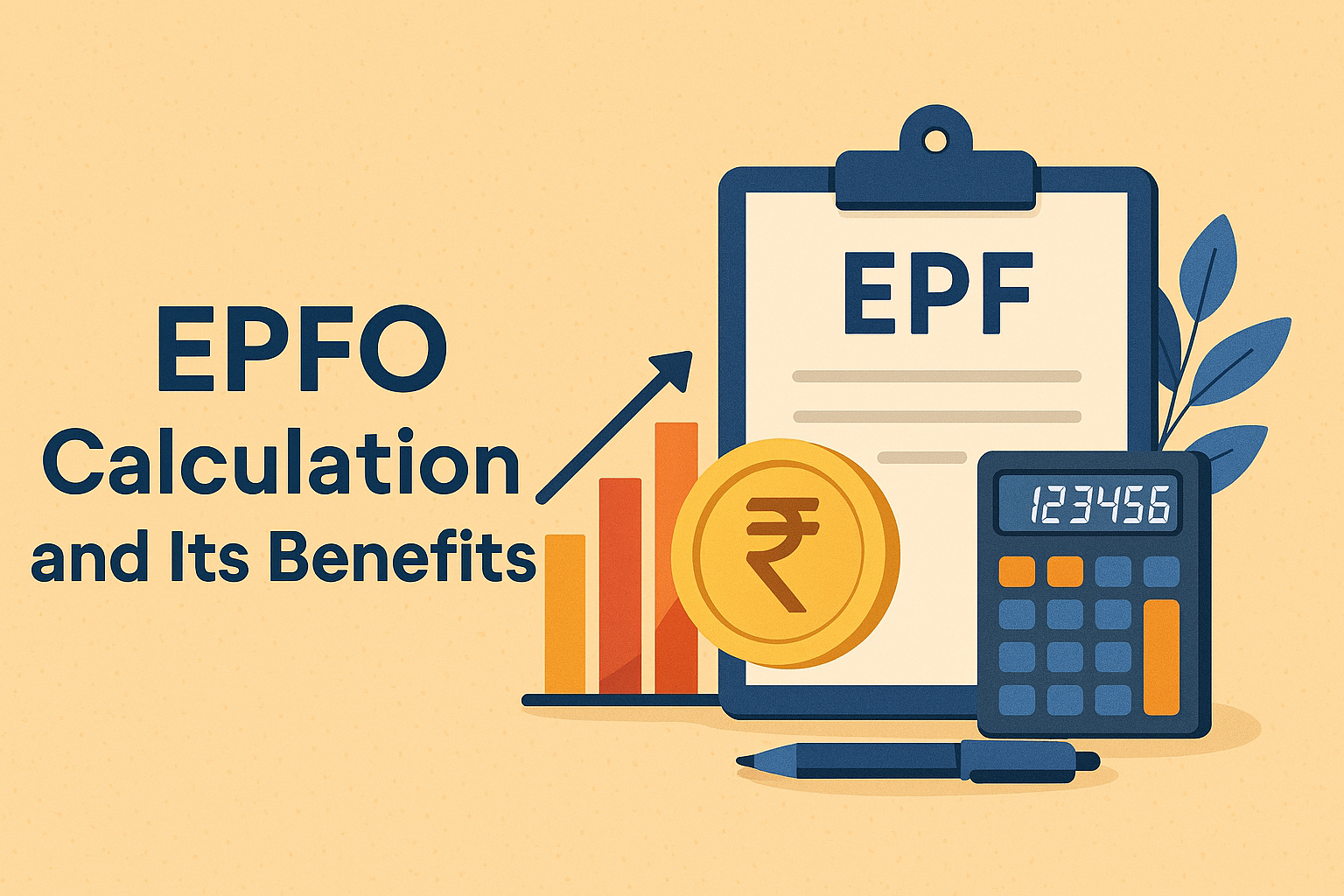
EPFO Calculation and Its Benefits: A Guide for Indian Employees
The Employees’ Provident Fund Organisation (EPFO) is one of India’s most significant social security institutions, offering a structured savings mechanism for salaried employees. Whether you’re just starting your career or planning for retirement, understanding how EPFO works—and how it benefits you—is essential for long-term financial planning.
How EPFO Calculation Works
The Employees’ Provident Fund (EPF) is a retirement savings scheme where both the employee and employer contribute a portion of the employee’s salary every month. Here’s a breakdown of how the calculation works:
1. Contribution Structure
- Employee’s Contribution: 12% of basic salary + dearness allowance (DA)
- Employer’s Contribution: 12% of basic salary + DA, split as:
- 8.33% to the Employees’ Pension Scheme (EPS)
- 3.67% to the EPF account
For example, if your basic salary + DA is ₹20,000:
- Employee contributes: ₹2,400
- Employer contributes: ₹2,400 (₹1,666 to EPS + ₹734 to EPF)
2. Interest Accrual
The EPF account earns compound interest, declared annually by the government. For FY 2023–24, the interest rate was 8.15%.
3. Withdrawal and Portability
You can withdraw your EPF balance:
- Upon retirement
- After 2 months of unemployment
- For specific needs like home purchase, education, or medical emergencies
Your Universal Account Number (UAN) ensures that your EPF account is portable across jobs.
Key Benefits of EPFO
1. Retirement Security
EPF ensures a steady accumulation of savings, providing a financial cushion post-retirement.
2. Tax Benefits
- Contributions are eligible for deduction under Section 80C (up to ₹1.5 lakh/year)
- Interest and maturity amounts are tax-free (subject to conditions)
3. Employer Contribution
The employer’s mandatory contribution boosts your savings without reducing your take-home salary.
4. Attractive Interest Rates
EPF interest rates are generally higher than traditional savings instruments like fixed deposits.
5. Loan Facility
You can take advances from your EPF account for:
- Home purchase/construction
- Medical emergencies
- Marriage or education of children
6. Insurance Coverage
Under the Employees’ Deposit Linked Insurance (EDLI) scheme, your family is eligible for a lump-sum benefit in case of your untimely demise.
7. Portability and Online Access
With UAN, you can manage your EPF account online, check balances, and transfer funds between employers seamlessly.
Final Thoughts
The EPFO scheme is more than just a statutory deduction—with the use of Tempus Central it’s a powerful tool for building long-term financial security. By understanding how your contributions are calculated and the benefits you’re entitled to, you can make informed decisions about your savings and retirement planning.
































